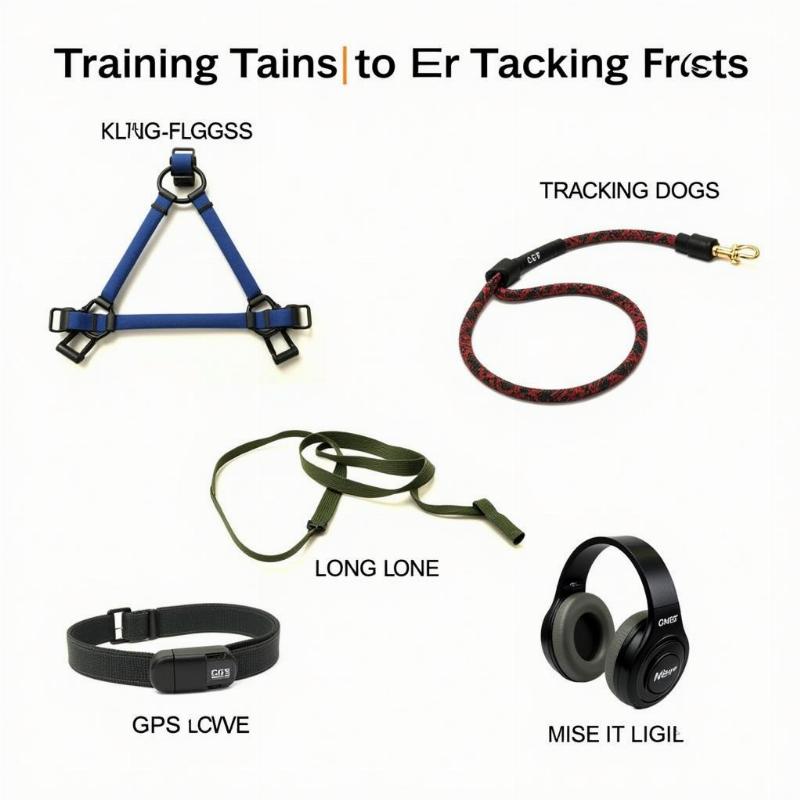Tracking a wounded deer is a crucial skill for ethical hunting, ensuring a swift and humane harvest. A well-trained tracking dog can significantly increase recovery rates, minimizing suffering and maximizing the use of the resource. This comprehensive guide will delve into the methods and considerations for training a dog to track wounded deer, covering everything from breed selection to advanced tracking techniques.
Choosing the Right Breed for Deer Tracking
While dedication and consistent training can yield results with various breeds, certain breeds possess innate traits that make them particularly well-suited for tracking. These breeds often have a keen sense of smell, high prey drive, and the stamina required for extended searches. Popular choices for deer tracking dogs in the US include Bloodhounds, Drahthaars, and Bavarian Mountain Hounds. Consider your hunting environment and personal preferences when selecting a breed.
Starting Early: Foundational Training for Puppies
Early socialization and exposure to deer scent are vital for a successful tracking dog. Begin by introducing your puppy to the scent of deer hide or blood on a drag rag. Keep training sessions short, positive, and rewarding, using high-value treats or toys to reinforce desired behaviors. how to train your dog to track deer Focus on building a strong bond and establishing basic obedience commands like “come,” “stay,” and “heel” before progressing to more complex tracking exercises.
Developing Tracking Skills: From Drag Rags to Live Tracks
Gradually increase the complexity of the training scenarios. Start with short, straight drags and progressively introduce turns, varying terrains, and longer distances. As your dog’s confidence grows, introduce distractions and more challenging conditions. Practice in different environments, including forests, fields, and even water, to prepare your dog for real-world tracking situations.
Utilizing Specialized Equipment for Advanced Training
Specialized equipment can enhance your training efforts. Consider using tracking harnesses, long lines, and GPS collars to monitor your dog’s progress and ensure their safety during training. Electronic training collars can also be helpful for reinforcing commands at a distance, but their use should be guided by ethical and humane training practices.  Dog Tracking Training Equipment
Dog Tracking Training Equipment
The Transition to Live Deer Tracking: Real-World Application
The culmination of your training is the transition to live deer tracking. Begin with recently shot deer, allowing your dog to follow fresh tracks and solidify their understanding of the task. Work closely with experienced trackers or hunting mentors to gain valuable insights and refine your dog’s skills in real-world scenarios. blood tracking dogs for deer Remember, patience and persistence are key to success in live tracking.
Ethical Considerations and Legal Regulations
Always adhere to local hunting regulations and ethical guidelines when tracking wounded deer. Ensure your dog is properly licensed and vaccinated, and prioritize the humane recovery of the animal. Understand the legal implications and responsibilities associated with using a tracking dog for hunting.
“A well-trained tracking dog is an invaluable asset to any ethical hunter,” says renowned dog trainer, Sarah Miller. “They not only increase recovery rates but also contribute to responsible wildlife management.” how to train dog to track wounded deer
Maintaining Proficiency: Ongoing Training and Practice
Consistent practice is essential to maintain your dog’s tracking proficiency. Regular training sessions, even outside of hunting season, will keep their skills sharp and reinforce their understanding of the task. Consider joining tracking clubs or participating in tracking competitions to further develop your dog’s abilities. deer tracking dog for sale
Conclusion
Training a dog to track a wounded deer requires dedication, patience, and a commitment to ethical hunting practices. By following a structured training program and prioritizing the well-being of your dog, you can develop a valuable hunting partner and contribute to responsible wildlife management. Remember to always adhere to local regulations and prioritize a swift and humane recovery.
FAQ
- What is the best age to start training a dog for deer tracking? Ideally, start introducing your puppy to deer scent and basic obedience training as early as possible.
- How long does it take to train a dog to track wounded deer? The training timeline varies depending on the breed, the dog’s individual aptitude, and the consistency of training. It can take several months to years to develop a proficient tracking dog.
- Are there any legal restrictions on using tracking dogs for hunting? Regulations vary by state, so it’s crucial to familiarize yourself with local hunting laws regarding the use of tracking dogs.
- What equipment is essential for training a tracking dog? Essential equipment includes a tracking harness, a long line, and high-value rewards. GPS collars and electronic training collars can also be helpful.
- Where can I find resources for training my dog to track deer? Local hunting clubs, experienced trackers, and online resources can provide valuable guidance and support.
- What are some common mistakes to avoid when training a tracking dog? Common mistakes include rushing the training process, using negative reinforcement, and failing to maintain consistent practice.
- How can I ensure my dog’s safety during tracking? Use a GPS collar to monitor your dog’s location, be aware of potential hazards in the environment, and ensure your dog is properly vaccinated and protected against parasites.
Beautdogs.us: Your Trusted Source for Dog Care
Beautdogs.us is your premier online destination for comprehensive and engaging information on dog care, breed specifics, and premium products in the US. Whether you’re a novice or an experienced dog owner, our expert-driven content provides valuable insights into all aspects of dog companionship. We offer a wealth of knowledge on dog breeds, training techniques, health and wellness, and much more. Contact us today to learn more about our services and how we can help you become the best dog owner possible. Email: [email protected], Phone: +1 501-555-7529.